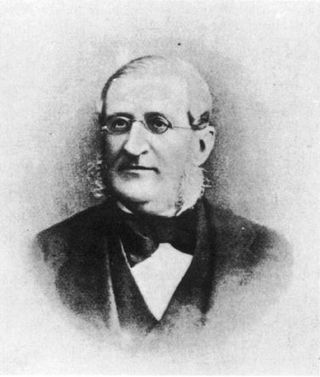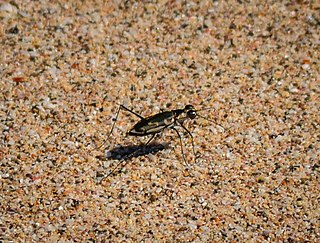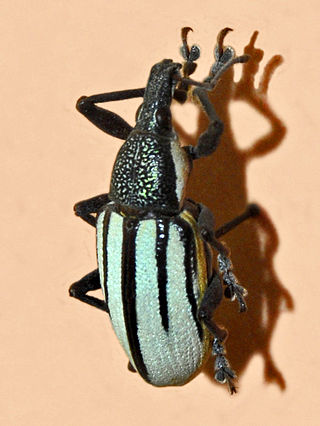
Calosoma sycophanta, the forest caterpillar hunter, is a species of ground beetle belonging to the family Carabidae.

Maximilien Chaudoir, or Maximilien, baron de Chaudoir, was a Russian entomologist. He was a specialist in Coleoptera and in particular the Carabidae. His Cicindelidae are conserved by the Muséum national d'histoire naturelle in Paris. His Carabidae were acquired by Charles Oberthür (1845–1924), then given to the same museum. He wrote Mémoire sur la famille des Carabiques, 6 volumes commencing 1848.

Calosoma is a genus of large ground beetles that occur primarily throughout the Northern Hemisphere, and are referred to as caterpillar hunters or caterpillar searchers. Many of the 167 species are largely or entirely black, but some have bright metallic coloration. They produce a foul-smelling spray from glands near the tip of the abdomen. They are recognizable due to their large thorax, which is almost the size of their abdomen and much wider than their head.

Dorcasominae is a subfamily of the longhorn beetle family (Cerambycidae).

Iresia is a genus of beetles in the family Cicindelidae, containing the following species:

Opilidia is a genus of beetles in the family Cicindelidae, containing the following species:

Stenocrepis is a genus of beetles in the family Carabidae, containing the following 31 species:

Eburia is a genus of beetles in the family Cerambycidae.

Clytini is a tribe of beetles in the subfamily Cerambycinae, containing the following genera:

Elaphidiini is a tribe of beetles in the subfamily Cerambycinae, historically also often spelled "Elaphidionini".

Chrysoprasis is a genus of beetles in the family Cerambycidae, containing the following species:
Cycnoderus is a genus of beetles in the family Cerambycidae, containing the following species:

Eriphus is a genus of beetles in the family Cerambycidae, containing the following species:
Calosoma striatulum is a species of ground beetle in the subfamily of Carabinae. It was described by Louis Alexandre Auguste Chevrolat in 1835.

Lytta is a genus of blister beetles in the family Meloidae. There are about 70 described species in North America, and over 100 species worldwide.

Exophthalmus is a genus of broad-nosed weevils in the family Curculionidae. It contains 85 described species.

Diaprepes Schönherr 1823: 1140 is a genus of broad-nosed weevil belonging to the family Curculionidae, subfamily Entiminae, tribe Eustylini.
Dychophyiini is a tribe of beetles in the subfamily Cerambycinae, containing the following genera:













